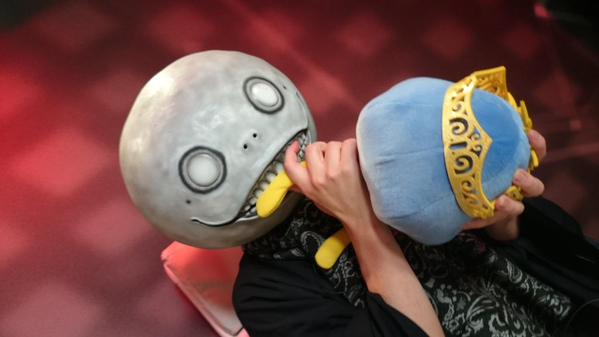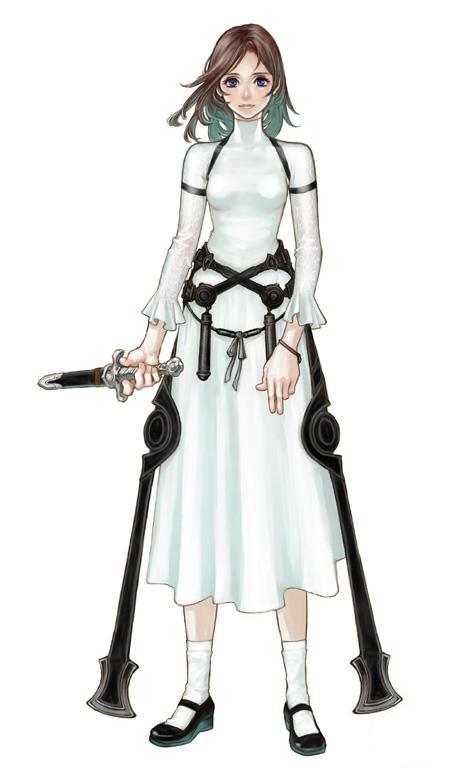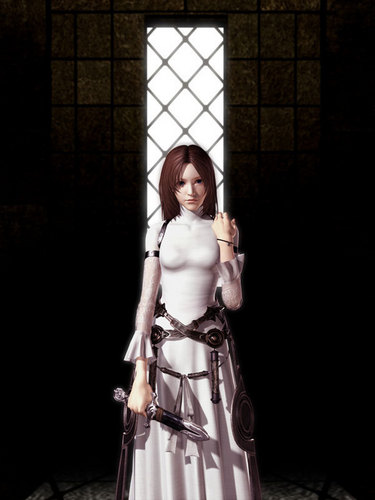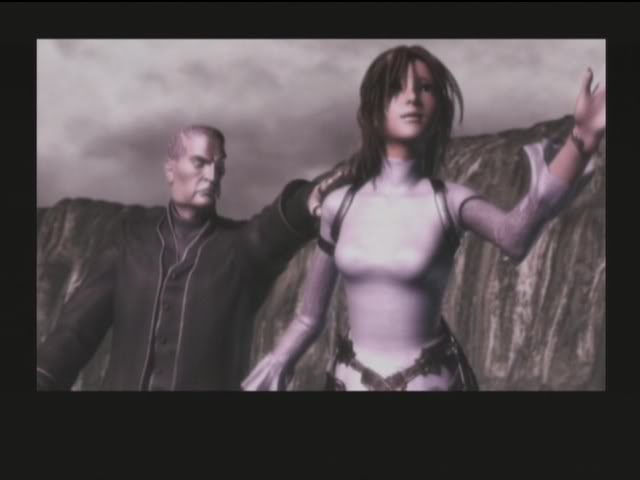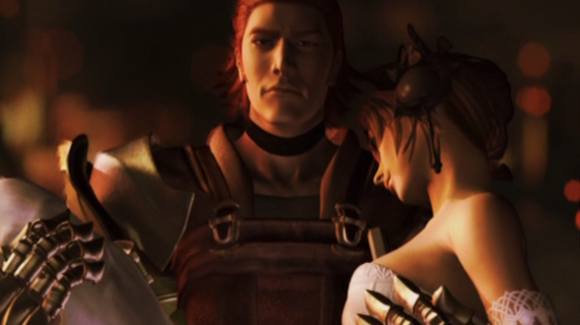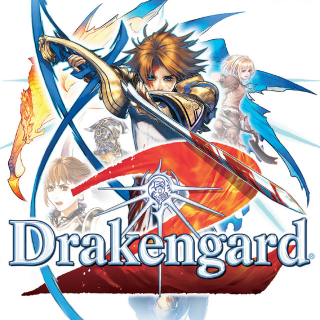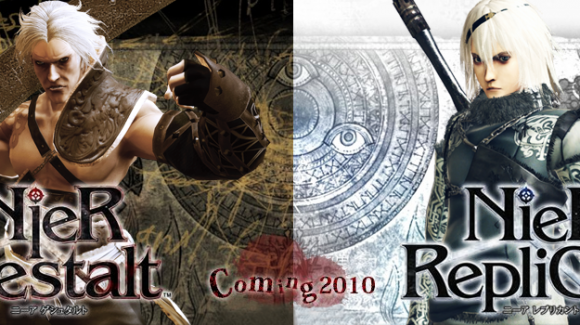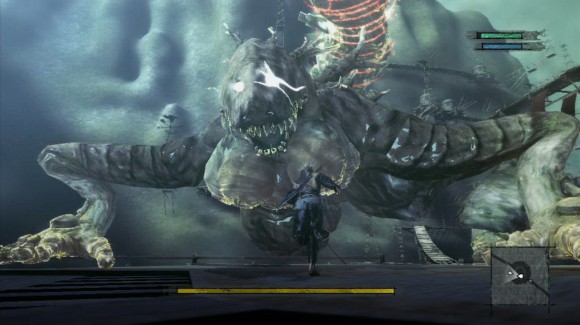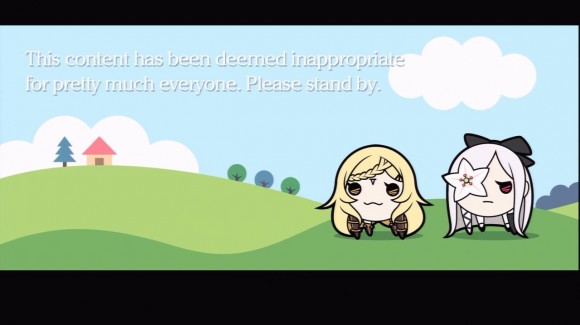Welcome there! If you are here I assume you played Nier, you liked it, and now you are pumped up about Nier 2. I am pumped too, but weary. I am not sure what to expect and anyone who says they do is mistaken or lying. See, Nier 2 is in the hands of Yoko Taro and his eccentricities go far beyond wearing a moon mask in public. He favors unconventional methods of story telling, which is common enough since the indie explosion, but his games are sold as straightforward experiences. He also likes to add twists to his games. He is not fond of just repeating the formula of his past games. Even if they are similar, they are not the same. It doesn’t help that his games tend to be flawed. I can’t say that I remember one of his games where a recommendation does not come with a huge caveat.
While I sound critical I like his work, or I wouldn’t keep buying his games. His unconventional style does provide some unique and innovative experiences that I ultimately am glad to have played. As one of the few people I am aware of that has followed this mad man’s career, I feel it is my duty to look back on his past projects, as both a celebration of his work, and a warning to those who haven’t experienced the full brunt of madness tied to Yoko Taro.
The Before Time
Yoko Taro did not intend to make video games. He kind of stumbled into it when he landed his first job at Bandai Namco Games in 1994 as a 3D CGI designer. There he would work until 1999, when he went to a Sony studio called Sugar and Rockets, where he would stay until its eventual closure in 2001, at which time he moved to another developer called Cavia.
During this time he worked on games, but mostly in small roles such as background designer. His background work will certainly sound familiar to anyone who frequented arcades in the late 90’s, including the likes of Alpline Racer and Time Crisis II. Taro worked on other titles when he joined Cavia in 2001, but was also given his own project; 2003’s Drakengard.
Warning, there are spoilers of Yoko Taro’s games below!
Drakengard
I played Drakengard with a friend and the reason we purchased it was because it had a dragon and Square-Enix on the cover. These were simpler times. Drakengard was a strange brew indeed, a fairly superficial third person medieval fighting game in the vein of Dynasty Warriors combined with air combat on a dragon that was inspired by the Ace Combat series. Drakengard wasn’t a solo project, and in fact Yoko Taro was not involved in its genesis at all. It was originally conceived by Takamasa Shiba and Takuya Iwasaki at Caiva. However, Mr Iwaski was too busy with other projects and he was unable to assume the position of director, and so Yoko got the job.
Drakengard was a strange game. The graphics looked awful, which will become something of a trend in Yoko’s games, and the fact that it was based in a northern European setting just made it look kind of boring. The gameplay was average, despite having several weapons and a leveling system for them, the ground combat was repetitive and there wasn’t really any nuance to the combat. The aerial sections were a novelty though they also didn’t control very well.
Drakengard’s strength was in its plot, which seemed simplistic at first but as the game progressed delved into some dark things. References to pedophilia and incest were ultimately toned down for the western release. Since it was expected that Drakengard would not have a sequel, there were five endings to the game. This included a fifth joke ending that required the player played through the game, collected all weapons, and unlocked all the other endings. We will come back to this later.
Drakengard’s reception was mixed, but it sold enough that it warranted a sequel anyway. This was a problem, since the development of the game was somewhat troubled. Taro and Shiba went back and forth on the characters, changing their roles and relationships. The game’s advisory board also vetoed some of Taro’s most adventurous ideas, leading him to promise this was the last Drakengard game he would ever work on.
Drakengard 2
Drakengard 2 is not really Yoko Taro’s game. He was involved with it under the mysterious title of Video Editor, and so we won’t spend much time with it. Drakengard 2 has a lot of the same problems as its predecessor, bad graphics, boring art direction, and gameplay that somehow felt less inspired than Drakengard. While it did have the multiple ending mechanic, the story felt formulaic and souless. It was critically panned, however it did sell well enough that Cavia decided to give Yoko Taro a shot at making his own follow up to Drakengard. And that’s how Nier was born.
Nier
Five years after the release of Drakengard 2, Nier comes out and is received to the collective proclamations of “Oh right, Drakengard was a thing” by gamers everywhere. Nier falls more under the Action RPG flag than under the pure action category of the Drakengard titles. Yoko Taro wanted to appeal to the West and more mature gamers with this title and so he made the main character an older, uglier man than the teenage protagonists that are often seen in JRPGs. Square-Enix on the other hand wanted it to sell in Japan. This Resulted in two different versions of the game: Nier Gestalt, which was the version released in the West and on the Xbox 360 in Japan, while Nier Replicant was released solely for the PS3 in Japan. In Replicant, the gruff, mature protagonist was replaced with a teenage protagonist to appeal to the Japanese audience. If you look at the numbers it worked. Replicant sold about six times as many copies as Gestalt in Japan, but that was probably helped by the low adoption rates of the Xbox 360 in that market.
In the game, the titular character Nier (though you can change the name if you want) is questing for a cure for a disease called the Black Scrawl, which afflicts his daughter (or sister in Replicant) Yohna. Along the way he finds a foul mouthed swordswoman named Kaine, a young man called Emil who petrifies people with his eyes, and a talking book called the Grimoire Weiss. The village in which Neir lives is crude and low tech but it is surrounded by the ruins of the modern world. Since this is supposed to be a follow up to Drakengard, this can only mean one thing: The canon ending is that joke fifth ending we talked about earlier. My personal theory is that this was Taro’s way of making Drakengard 2 irrelevant. Still this means that if you want to follow the connection you better dig your PS2 out and finish Drakengard properly, fool. Of course most people who played Nier had no idea about any of this, and so this had no effect in their experience, showing Yoko’s commitment to only trolling his most loyal fans.
Like other Yoko Taro games Nier was ugly. Nothing new here. Nier’s gameplay was inspired by the God of War series, and it was fairly action focused, while having the party dynamics more often seen in RPG’s. There were different weapons, spells and abilities that could be bought or acquired from enemies, giving the unexpected depth. What really set Nier apart, besides the story, were the boss battles. Nier’s bosses generally emulate other game styles within the game while using the game engine. The game produced some of the most unique and fun boss fights I have ever experienced.
Like Drakengard before it, Nier requires that you finish it multiple times to get the full picture. New Game Plus provides much needed background on the supporting characters, especially Kaine who is revealed to be a hermaphrodite. The player also gains the ability to understand the shades though the characters still don’t and you realize they are not that bad. You also get a new ending. But wait there’s more! If you finish the game a third time, there is a choice at the end. Depending on the choice you make, the ending will feature the characters losing their memories, and if you go on to start a fourth game you will receive a surprise: the save file has been deleted. The game erases your file, and it is not a mistake or glitch as evidenced by the fact that the game will no longer allow you to use the same name as on your previous playthrough.
Despite all the innovation Nier had mixed reviews. Still, it is probably the most successful of Yoko Taro’s games, at least in the West. While it is still not widely popular, it still garnered a cult following. Nier sold pretty well in Japan, and even better in the West. Apparently Square-Enix was focused on the Japan numbers, because Yoko did not get another game, rather he was exiled to work on Square’s Mobile division.
The Mobile Exile
After Nier, Yoko worked in some capacity on two mobile social games: Monster X Dragon and Demon’s Score. It is not known what role he played in the games, though he is credited as a scenario supervisor and director. These were quiet releases, devoid of his usual craziness aside from the themes of possessions and parasitic relationships. And our story may end here, but then Takamata Shiba approached Yoko, intending to get the band together for one last gig.
Drakengard 3
You can read my Drakengard 3 review here, so lets just summarize. It looks like a PS2 game, which makes it inexcusable that it suffers from frame rate issues. The story is good, and the combat can be challenging. But in normal Yoko Taro fashion, the game doesn’t really start until you have finished the game at least once. In fact, until you start the second time line, the game feels like a dumb hack and slash starring a psycho with no real motivations. It is a lot to ask from the player to hold on through your ugly, seemingly stupid game for it to get good only after they’ve seen the credits once.
During the production of the game, there was a fan questionnaire where it was determined that fans wanted a dark story. Yoko decided it was the time to create a female protagonist: Yoko Taro Style! This resulted in Zero; a former abused prostitute and murdered, moody, lazy, foul mouthed, and promiscuous, she was designed to be the antitheses of the boring two dimensional female characters that Yoko hates in other games. She turned out to be on of my favorite female characters released in recent memory. This, along with the improved gameplay, especially after the first ending, makes Drakengard 3 the best of the series.
But as you have probably guessed by now, Yoko Taro can’t just leave things alone. As I mentioned before, Drakengard 3 requires a lot of patience from its player, since it doesn’t get going until the first ending, which is really the halfway point of the game. This is not the only thing Drakengard 3 does to you. In order to open up the last line you need to collect all of the weapons of the game, just like in the original. Of course this is a sequel, so there are a lot more weapons than back in the Drakengard days. So after you finished the game 3 times and collected all the weapons and play through the last timeline, you get to the final boss, and oh boy, are you in for a surprise.
The last boss of Drakengard 3 is a seven minute rhythm game, complete with a rotating camera that often obscures the prompts so you can’t see that they are coming and you are supposed to press a button. If you make a mistake, you lose and will have to start all over again. There are no check points, you must be perfect. Stick that in your Hatsune Mikus and smoke it! This is a mechanic that has never come up in the game before. I have not finished Drakengard 3. Despite this I think Drakengard 3 is at least worth playing, and I do plan to finish it someday.
Like every other Yoko Taro game ever, it received mixed reviews, even from yours truly. It sold well enough, though unlike Nier, it seemed to fly under the radar of everyone but a small niche of fellow masochists. After it was released, Yoko Taro left Square-Enix and dedicated himself to a few writing projects including a column in Famitsu called “Taro Yoko’s Circle of No Good Thinking” which I never read, but I love the title. Once again, I assumed that the ride was over, but then E3 2015 happened.
The Future
So Yoko Taro comes out to the stage in E3, moon mask and all, and announces a new Nier game working in conjunction with Platinum games of all developers. What can we expect? Well, it’ll probably be dark and have a good story. Yoko’s story telling has improved with any new game. The partnership with Platinum leads me to believe they are going to work on the combat a lot, so the combat mechanics will probably be deeper and more fast paced.
Beyond that, I don’t know. I don’t know what new surprises he has up his sleeve, and I don’t know if the collaboration with Platinum will diminish or exacerbate the eccentricities that inform his game design philosophy. Whatever it is, I am looking forward to it, and you should too. Just remember who the man responsible for this project is and be aware that what you will get with this game is very likely not going to be what you were expecting. But if you accept that and are ready for whatever comes out of that project, you can be sure it will be one hell of a ride.

